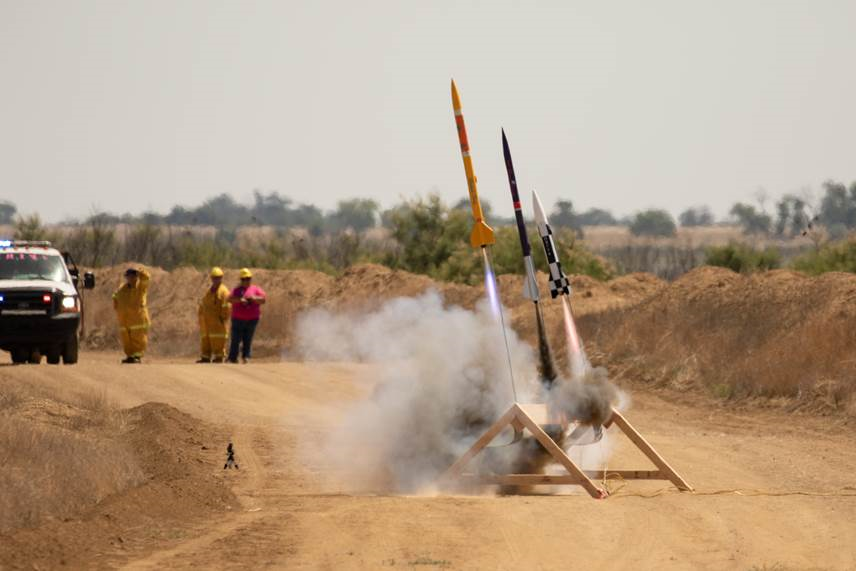United Launch Alliance (ULA) and Ball Aerospace have created a unique educational program that sponsors an annual launch event for large high-power sport rockets. This year, the tenth anniversary, the event took place July 14 at Lake Meredith, about 40 miles east of Pueblo, Colorado, and flew to 3,500 feet above the ground. The program involves mentors, ULA and Ball college interns as well as elementary, middle, and high school teams from the all over the United States, who designed and built 31 payloads for the rocket. A payload consists of objects that are carried by rockets high into the sky and then deployed from the rocket. A payload can consist of anything a team dreams up and there is not cost to students to fly payloads on the rocket. The objectives of the program aim to give students design, analysis, test and hands-on 3D fabrication experience while providing a fun and enriching experience that motivates students to pursue a technical career.
Lift-off of the drag-racing rockets with Donut Boy (yellow) taking an early lead.
This year’s rocket, the Future Heavy SS, held a record number of payloads with the final count being 31, including three large Ball Aerospace intern payloads, the first ever ULA intern-built payload, 16 non-competition K-12 payloads, and 11 K-12 competition payloads. No payloads made it to the target this year, so the awards were given based on design presentations done by the student teams earlier in the summer. First place went to Boulder High School, second place went to Monarch High School and third place went to Green Mountain High School.
ULA's Future Heavy SS Rocket, a single stage craft powered by 10 solid rocket motors, whose main engines consist of two M2500 and four N2000 engines, ignited and performed lift-off perfectly. Shortly after apogee, drogue parachutes were deployed sequentially as planned, but were shredded upon deployment. This caused greater-than-expected airspeeds as the main parachutes were deployed, resulting in the main chutes breaking free. This caused the descent speed to be about three times faster than planned for the payload deployments, and splashdown happened much sooner than expected. This minor detail may have caused the last few payload deployments to kick-off while the Future Heavy SS was already in the water. The cause of the unintended sequence of events will add to the journey of the students who participated, leading to further investigation and analysis of how the anomaly happened.


